#thymine art
Explore tagged Tumblr posts
Text
Greetings!
uhh long overdue

Warning long text intro post 💥💥💥
Call me raccoon!

I am not a raccoon irl so I'm sorry raccoon hunters
I strive to make this post use all fonts
I am A minor🎶🎵
DNA: human
DNI: if you're gonna be a creep or excessively rude to me or other people I'll block so that's your call
DND: I haven't played it
Topics I'm showing and telling:
Tally hall
This is my favorite band. Formed in 2002-2003 in ann arbor Michigan, originally called 540 ; this is a musical group of 5 people + 2 bonus members [Bora karaca & Casey shea]. Consists of Joe hawley, Zubin sedghi, Rob cantor, Ross federman & Andrew horowitz
I LOVE time machine demos especially the one from 2006 (the one they performed at the blind pig)
Animal jam
This is a game created by Wildworks in collaboration with nat geo. Currently they broke up their partnership. This game is where I first got scammed and learned the harsh reality of the world (the stock market). One of the most realistic economic simulators and I love it.
Biology
Study of life and death. I don't post about it but it's an interesting topic! I'm particularly interested in the replication of dna. My favorite nitrogenous base is thymine. I feel bad for it when it gets replaced by uracil in RNA (top 10 saddest anime betrayals). My favorite bone is the Atlas!

Okay onto organization:
1. I am not organized
2. Here are the tags I may or may not use:
tally hall -added to ALL tally hall related things
drawing or art - drawing is more common for me to use
will wood
lemon demon
silly - tag added to posts i dont want lost in the sea (unreliable)
animal jam
wtth project - stuff relating to the welcome to tally hall reanimation project
id just like to say indigo does not exist in my rainbows
Additional information:
I use ibis paint x & krita (i like the krita preset brushes a lot) to draw if I haven't stated it in tags & use flipaclip to animate. Occasionally I draw in the animal jam drawing program and sometimes kidpix
I animate at these fps: 4, 8, 12, 24
Socials:
Discord - electricfield
Youtube - typoraccoon
Strawpage (I'm inactive)
Twitter - typoraccoon
Neocities - typoshark
We're back to say goodbye and Sing to you once MORE!!! hope that you enjoy part one we truly DO!!
there is no part two.

59 notes
·
View notes
Video
youtube
DNA Drawing Step by Step | DNA Structure Pencil Drawing | How to Draw DNA Double Helix Structure
To learn DNA structure pencil drawing step by step easy method you should know how to draw DNA double helix structure and DNA double helix structure drawing. Have a look at how to draw DNA and DNA structure drawing with labels. So let's watch how to draw structure of DNA easily. DNA molecule structure drawing is the first step,
I mean how to draw structure of DNA molecule and how to draw chemical structure of DNA. DNA structure model drawing is the second step here. Focus on how to draw structure of DNA in easy method for class 12, class 10 and class 11.
✅ SUBSCRIBE: https://www.youtube.com/c/FarinKhanArtAcademy
Step-by-Step Tutorial:
How to Draw the DNA Structure:
The representation of DNA structure can be represented as a simple or complex drawing. In this tutorial, we will show you how to draw the DNA structure in an easy way.
Step 1: Guidelines. Draw two parallel lines to serve as the basis for the two DNA strands. They should not be perfectly straight, as DNA has a coiled structure. A slight curve or spiral is ideal.
Step 2: Base Pairs. Draw small lines perpendicular to the two strands. These lines represent the base pairs that connect the two DNA strands. The base pairs should be evenly spaced along the two strands.
Step 3: Twisting.g Begin to turn the two parallel lines and the base pairs into a spiral. You can tilt the small lines (base pairs) slightly to simulate the helical shape of DNA.
Step 4: Three Dimensions To give the drawing a three-dimensional effect, you can draw the parallel lines and base pairs so that they slightly overlap or hide behind each other.
Step 5: Sugar-Phosphate Backbone The two strands of DNA are often referred to as the sugar-phosphate backbone. To show this, you can draw small circles or squares along the two parallel lines. This shows the individual sugar and phosphate molecules.
Step 6: Bases The base pairs are represented by the letters A, T, C, and G. If you want, you can place these letters near or on the small lines between the strands to represent the base pairs adenine (A), thymine (T), cytosine (C), and guanine (G).
Step 7: Shading Add shading to give the drawing more depth and realism. Shading can be applied along the sugar-phosphate backbone and base pairs.
Step 8: Fine-tuning. Go over your drawing and add any details or adjustments you feel are necessary. Make sure the proportions are correct and the helix structure is clear. You've now successfully drawn a DNA structure! This tutorial provides a simple way to represent the complex features of DNA in an easy-to-understand format. You can make the drawing as detailed as you like by adding more molecules, bases, or even additional helices.
Happy drawing!
#scienceart #sscbiology #biologypractical #dna #stepbystepdrawing #drawing #drawingtutorial #art
#youtube#dna drawing step by step#dna structure pencil drawing#how to draw dna double helix structure#dna structure drawing easy#dna double helix structure drawing#how to draw dnadna structure#how to draw dna#dna structure drawing#how to draw structure of dna easily#dna structure drawing with labels#how to make structure of dna model#dna molecule structure drawing#how to draw structure of dna molecule#how to draw chemical structure of dna#dna structure model drawing
1 note
·
View note
Text
I was reading a biochemistry textbook today, and came across a detail that I thought was interesting.
Quick biology lesson for those who don't know: DNA, the molecule containing the "code" that's used to produce proteins, and therefore building up cells and doing all kinds of other stuff in the body, is built up of sequences of four "bases": Guanine, adenine, cytosine and thymine. These are usually referred to as G, A, C and T, and DNA code is often written as a sequence of these letters. There's a fun example of that in Jurassic Park, for example:

The production of proteins can be stimulated in many ways, including by various hormones. These hormones can bind to "receptors" in the cells, that then in turn bind to the DNA to initiate the creation of new proteins (yes, I'm skipping over some steps here to keep it simple). There are specific part of the DNA that specific receptors can bind to, called "response elements", that are built up of sequences of G, A, C and T called "consensus sequences".
What I read about in my textbook today is that the consensus sequence for the "estrogen repsone elements", I.E. the one that a receptor activated by the estrogen hormone binds to, is the following:
AGGTCANNNTGACCT
(The "N" means "any base can go here".)
I just wanted to share this little bit of genetic code related to estrogen, since it might be of interest to anyone making art about hormones, HRT, or similar stuff. Maybe it can be seen as a symbol for the many extraordinary things that estrogen does to our bodies.
Unfortunately, I don't know what the consensus sequence for testosterone receptors is. Maybe someone with deeper biochemistry knowledge knows?
#science#biology#biochemistry#DNA#hormones#estrogen#HRT#consensus sequence#genetics#genetic code#AGGTCANNNTGACCT
2 notes
·
View notes
Text
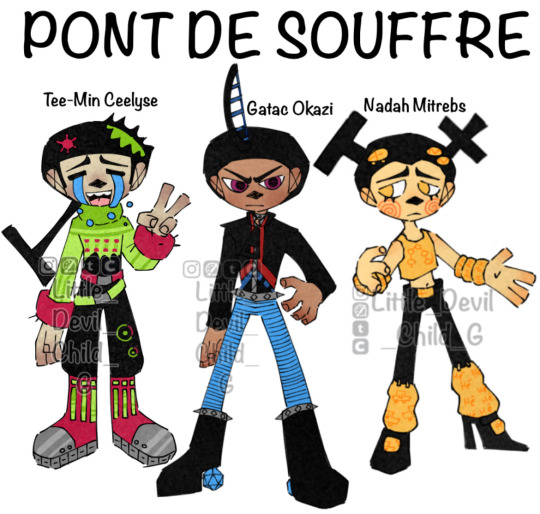



THEY ARE PONT DE SOUFFRE 🗣️
Here and focusing on life's downsides, Pont De Souffre is a punk band that I based on concepts I learned about in science class 🧬
I decided I would work on their designs in time for Art Fight 💪
Normalsy oc design lore drop coming up:
The name "Pont De Souffre" is inspired by "pont disulfure" or in English, disulfide bridges. It's a French play on words translating to "Bridge Of Suffering" ("souffre" referring to suffering, instead of "soufre" which refers to sulfur).
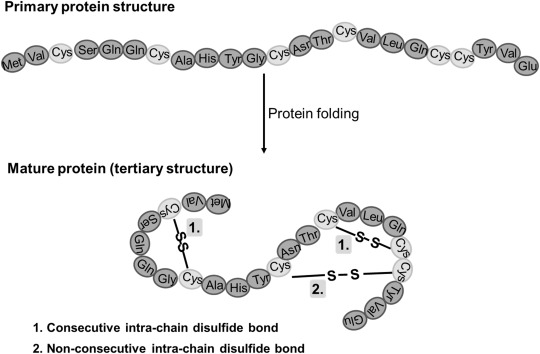
Gatac Okazi's name and parts of his design are inspired by Okazaki Fragments ("Okazi" being some letters from "Okazaki"). His shoes and accessories are inspired by the Bacteriophage virus. His first name (Gatac) comes from the DNA chemical bases : adenine (A), guanine (G), cytosine (C), and thymine (T). It's also inspired by the title of the film Gattaca, that was named in a similar way.

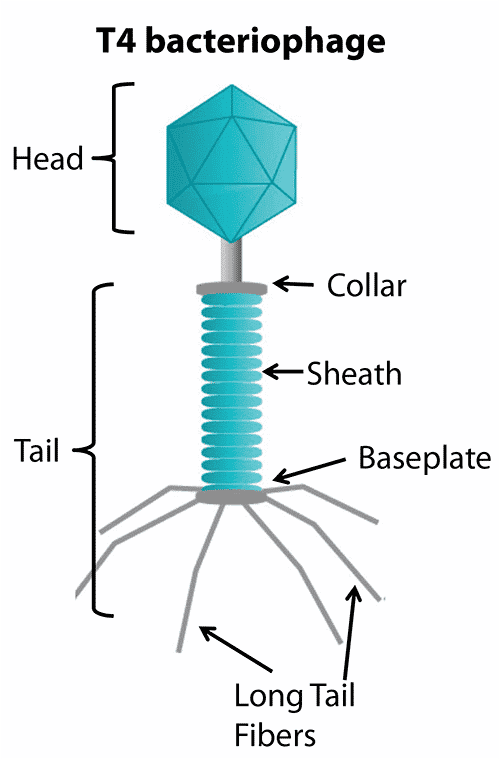
Nadah's name and design is inspired by cellular respiration (her first name being based off of NAD+/NADHs and her last name being a combination of "Mitochondria" and "Krebs" (referring to the Krebs Cycle specifically)). Her leg warmer and hairpin has car designs because NADHs were compared to taxis that transported electrons and hydrogen and I really liked that comparison lol
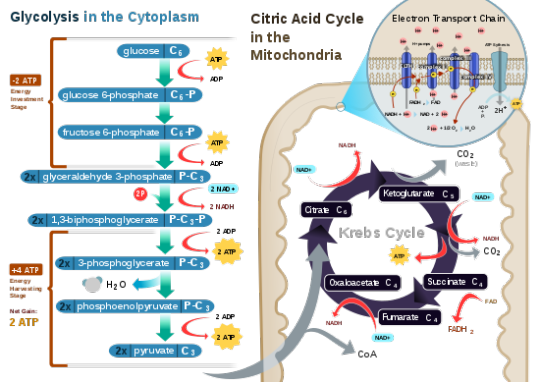
Tee-Min's name is based on the DNA chemical base thymine (T), their last name "Ceelyse" is based on cytolysis ("cytolyse" in French), this has also inspired their hair. Their shoes are inspired by agarose gel electrophoresis. Tee-Min's sweater has phospholipid sleeves and a phospholipid bilayer pattern on the torso. Their pants have a pattern referring to bacterial cloning vectors.

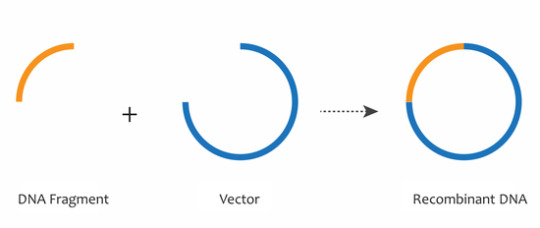
I learnt all of this in French originally so if any of the terms are wrong please forgive me 🙏 If you actually read any of this bless your little soul lol
#character art#original art#small artist#oc art#oc artist#artists on tumblr#artwork#my art#original character#digital art#ibispaintx#original charater art#pont de souffre#doodle#doodle dump#my oc#gatac okazi#nadah mitrebs#tee-min ceelyse
6 notes
·
View notes
Text
Unveiling the Power of Data: Global DNA Sequencing Services Market
The global DNA sequencing services market is anticipated to rise sharply and amount to USD 2,080.2 million by 2033. This significant increase from its USD 945.6 million base in 2023 is the outcome of an 8.2% compound annual growth rate (CAGR).
Because they enable the analysis of genetic material and the discovery of variants, mutations, and biomarkers associated with a range of disorders, including cancer, DNA sequencing services are crucial to the field of genomics. These services encompass a broad spectrum of sequencing methodologies and procedures, offering physicians, researchers, and pharmaceutical companies enlightening details on the genetic origins of illnesses and personalized therapeutic strategies.
Empower Strategies With Your Report Sample: https://www.futuremarketinsights.com/reports/sample/rep-gb-6453
The primary driver of the expected growth of the global market for DNA sequencing services is the rising incidence of cancer across the globe. The need for precision medical techniques and state-of-the-art genetic technologies to enhance diagnosis, prognosis, and treatment results is growing along with the global cancer patient population. The use of DNA sequencing services in oncology is being driven by researchers’ and doctors’ ability to define tumors, discover promising therapeutic targets, and create individualized therapy regimens based on individual genetic profiles.
DNA Sequencing: Unlocking the Secrets Within
The order of the four building units of DNA—adenine (A), thymine (T), guanine (G), and cytosine (C)—can be determined via DNA sequencing, a potent technology. Interestingly, A and C always pair with T and G, respectively. Deciphering the base pair sequence is essential to obtaining an individual’s genetic code. This information holds immense potential for various applications, including:
Identifying regulatory instructions within DNA
Pinpointing the location of genes
Understanding the genetic underpinnings of diseases
Top Highlights from the FMI’s Analysis of the DNA Sequencing Services Market: •The North American region is expected to account for the leading market share of more than 40.6% in 2023, followed by Europe, which is projected to account for 32.4% in the same year.
•The United Kingdom is forecast to expand at a CAGR of 12.9% over the estimated period, suggesting significant business avenues that the country is expected to present.
•India is anticipated to record a CAGR of 8.5% over the forecast period, whereas China is forecast to propel at a CAGR of 7.8%. DNA sequencing services are expected to increase in the region to meet the increasing medical demands of the population.
•Japan is forecast to account for a market share of 2.7%, comparatively lower than the other competitive markets. However, the market is expected to offer diverse growth opportunities to businesses.
•Based on solutions and services, the data analysis and sequencing services segment is forecast to account for 41.8% of the global market.
•Under the end-user category, the academic institutes and research centers segment is anticipated to record more than 37.7% over the forecast period.
Market Competition:
Illumina Inc., Thermo Fischer Scientific Inc., Oxford Nanopore Technologies Plc, Agilent Technologies, Inc., QIAGEN, Eurofins Scientific, F. Hoffmann-La Roche Ltd., Takara Bio Inc., GENEWIZ, Inc., Hamilton Company, Macrogen Inc., Zymo Research Corporation, and Tecan Trading AG are a few of the major players in the global DNA sequencing services market.
Owing to the involvement of multiple prominent players, the industry exhibits intense competition. International firms like Oxford Nanopore Technologies plc, Thermo Fischer Scientific Inc., and Illumina Inc. In addition to making up a sizeable portion of the market, a number of regional players are active in important growing areas, mainly in North America.
Recent Developments
In December 2020, Eurofins Genomics released SARS-CoV-2 NGS services that are both cost-effective and optimized, allowing for entire viral genome sequencing.
In May 2020, Roche introduced the KAPA Target Enrichmentportfolio and the KAPA HyperExome whole-exome research panel for target enrichment during sequencing.
Illumina recently received Emergency Use Authorization (EUA) from the FDA for its COVIDSeq Test, which is used to sequence the entire genome of the novel SARS-CoV-2 virus.
Face2Gene LABS was launched in June 2019 by PerkinElmer, Inc. and FDNA, an artificial intelligence company, to provide genomic services in conjunction with Next-Generation Phenotyping (NGP) technologies for more accurate and efficient diagnoses.
Key Segments Profiled in The DNA Sequencing Services Industry Survey:
By Product Type:
Maxam–Gilbert DNA Sequencing
Chain-Termination Methods
Dye-Terminator Sequencing
Automation and Sample Preparation
Large-scale DNA Sequencing
New DNA Sequencing Methods
High Throughput DNA Sequencing
Parallel Signature Sequencing (MPSS)
Polony Sequencing
Pyrosequencing
Illumina (Solexa) Sequencing
SOLiD Sequencing
Others
By End Use:
Automotive Industry
Chemical Industry
Agriculture
Oil and Gas
Research and Development
Other End Uses
By Application:
Hospitals
Diagnostic Centers
Biotechnology and Pharmaceutical Industry
Academic Research Institutes
Other Application Areas
By Region:
North America
Latin America
Europe
Asia Pacific
The Middle East & Africa
0 notes
Text
Unraveling the Essence of Us: My Deep Dive into the Human Genome
Buckle up, my friends, because I am about to take you on an astonishing expedition into the very blueprint of life itself – the human genome! If you're picturing a mysterious, spiraling ladder that seems to hold the secrets of our existence, well, you're not far off. Let's talk about this incredible journey of discovery, what the genome actually is, and the mind-blowing future that’s unfolding before our very eyes, including precision medicine and groundbreaking therapies.
From Mendel to Molecules: The Historical Pathway
Imagine my surprise when I learned that the road to deciphering the human genome started in a serene garden with a monk named Gregor Mendel and his pea plants. Who would've thought that peas could teach us about inheritance? Fast forward through microscopes and molecular models, past the iconic double helix discovery by Watson and Crick, and we arrive at the Human Genome Project. A Herculean effort that began in 1990 to map all the genes in the human genome and, oh boy, the stories those genes could tell!
What's a Genome, Anyway?
So, what is this genome thing? Simply put, it's the complete set of instructions for making you, you. Packed within those cells in our bodies, which – fun fact – if laid end to end, could stretch to the moon and back multiple times! Each human cell houses this cookbook written in a code of just four letters: A, T, C, and G – shorthand for the chemicals adenine, thymine, cytosine, and guanine.
I like to compare the genome to the most comprehensive cookbook yet, with 'recipes' that are genes responsible for everything from your eye color to how your body responds to medication. Imagine billions of these letters in sequences, folded and tucked away neatly into 23 pairs of chromosomes – that's some efficient packing!
Precision Medicine: The Future Knocking at Our Cells
And then there's precision medicine – talk about a game-changer! Before diving into this topic, I thought one-size-fits-all medicine was the only way. But boy, was I wrong! Precision medicine is the art (backed by solid science) of customizing health care, with decisions and treatments tailored to individual patients. It's like having a suit perfectly tailored to your measurements, but for your health.
Thanks to our understanding of the human genome, doctors no longer glance at a textbook to guess what might work; they're crafting therapies based on the genetic nuances of each person. Think of it as a GPS for health, where the journey toward wellness is mapped out with individual genetic landmarks.
I heard an anecdote about a woman with a rare form of lung cancer. She wasn't responding to conventional treatments, and things looked grim. But then, scientists sequenced her genome and found a targetable genetic mutation. They tailored a therapy just for her genetic makeup, and it was a turning point. She went from preparing for the end to planning her future. That's the power of precision medicine – it can turn the table on terminal diagnoses.
The Present and Beyond: Therapies and Possibilities
Right now, we're standing on the edge of a new frontier where gene editing tools like CRISPR are the scalpels. These molecular scissors can snip and edit the genes that contribute to inherited diseases. Imagine a world where conditions like cystic fibrosis or sickle cell anemia could be corrected before a baby is even born.
This isn't just future-speak; it's actually happening. The first trials of gene therapies are giving hope to people with conditions that were once thought untreatable. We’re talking about a new era where ‘genetic surgery’ could become as routine as getting your tonsils out.
And the possibilities? They're as vast as the genome itself. We're looking at the potential to prolong human life, to augment our bodies to better resist diseases or perhaps adapt to new environments – even space. We might be able to reprogram our biology to avoid aging the way we know it. It sounds like science fiction, but then again, decoding the human genome once did too.
Wrapping Up the DNA Double Helix
As I wrap up this genetic tapestry, I can't help but be in awe of how understanding our genome has become central to our lives. This knowledge shapes not just our health care but also our identities and our futures.
The genome is not just a story of life; it’s the autobiography of humanity, written in a language we're just beginning to fluently read. Each new discovery is a page turned, a chapter unfolded, a deeper understanding of the profound narrative we all share.
So, what's next on this genomic journey? I'll tell you this much: the future is bright, and it's personalized. With our genomic roadmap in hand, we're steering toward a horizon where medicine is tailored, treatments are precise , and the once incurable becomes curable. Hold onto your seats, because this is just the beginning, and I, for one, can’t wait to witness where we go from here—with every snippet of DNA, we're not just unlocking the secrets to our health, but also the untapped potential of humankind. The genome’s journey is far from over, and the next chapters promise to be nothing short of revolutionary!
0 notes
Text
five notes is five more notes than i needed to do this....YAY....hi everyone. some of these guys are more fleshed out than others and i haven't been able to consistently draw for a while because of Life so not everyone has good art. hokay anyway MY OCS i got tired so this is just the first half. god bless
OC THE FIRST: asher lachance! he/him, bisexuelle, 25ish depending on verse
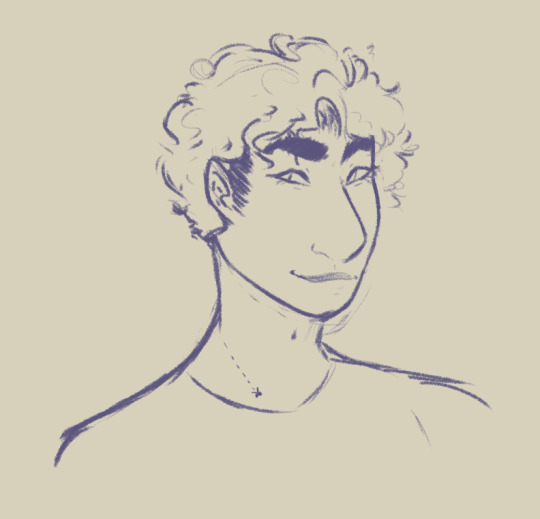

he is a shitty little mallgoth woo woo rat man. usually has teal hair (meme above) but sometimes i like to be sillay. i be putting him in situations. usually these situations are some combination of "new yorker gets trapped in the rural midwest" and "possessed by horrible spirits." extremely self loathing, problems with substance use (playing a fun game of "did i lose time because i was possessed or because i was blackout" AYYYY). lily's twin brother. older by seven minutes! OC THE SECOND: lily lachance she/her, lesbian, 25ish depending on verse
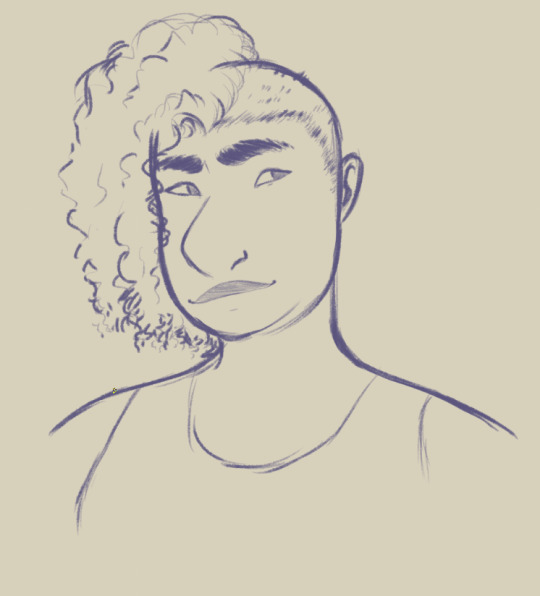
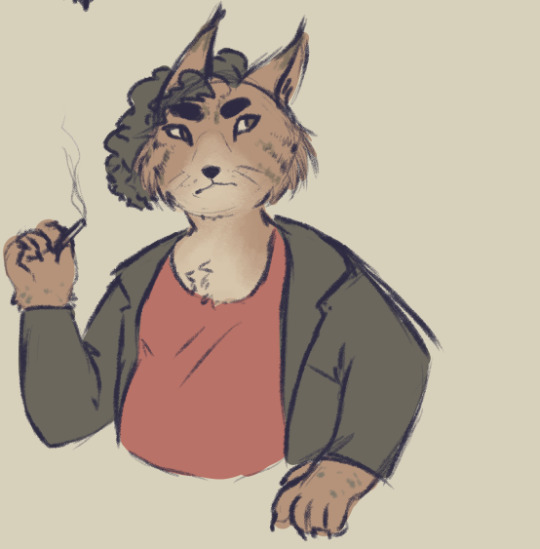
my beauteyful butch wife. not shown here because it's a doodle but she's got several tattoos including a cover up of an ex's name under her boob LMFAOOFAOFAOF. in non mundane settings she's a pyromancer :-). she's also usually transient, either biking crosscountry or if i give her a normal day job she's pretty much always a long haul trucker. she's got a lot of anger issues and despite being deeply loving and committed she tends to cope with her anger by just. immediately removing herself from the situation. so she never stays around too long. asher's twin brother. despite him being technically older and them also being . twins. she considers him her baby brother
aodhán (temple) he/she/they, sexuality very complex so just says gay as shorthand, in mundane settings 27-30ish
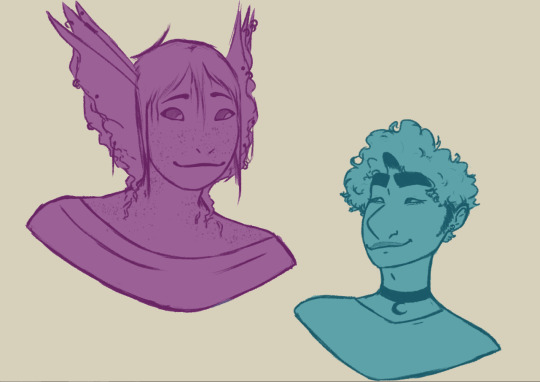

MY FISHEY :3 they are ummmm. obsessive and weird. deeply autistic but also literally raised in a cult and has some . Interesting ideas about how relationships and socialization work because of that. in all settings, loves fishkeeping (fresh and saltwater) and houseplants. normally is a water-aligned fae and a healer. normally like 7'4, in mundane settings is 6'9 as a human. VERY big and muscular but super soft spoken and dresses basically exclusively in pastel fuzzy things. loves hello kitty. has proposed to asher and been rejected like five times. it's a whole thing. only has last name temple in human settings
aya el-gamal they/them, bi, 19

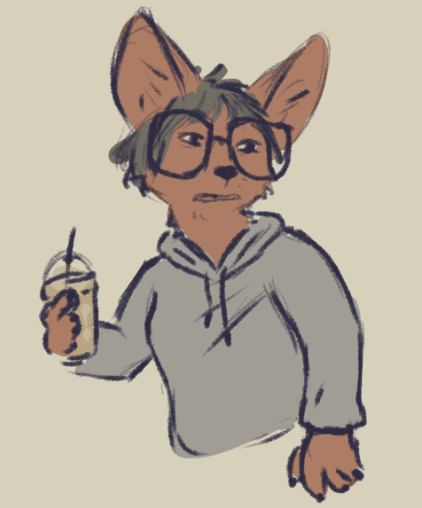
insert harrowhark jokes now. umm they are a tiny rageful necromancer that specializes in flesh constructs. in my setting there is an osiris necromancy guild and they're involved in the branch based out of new york! their goal is to perfect True Resurrection all by themselves (this is impossible. sadly requires friends.) they are insanely touch starved and are also majoring in linguistics and archaeology (this is what they do in mundane settings too). they made four constructs that they keep around them at all times and puppet around so no one knows they don't have any friends LOL. they call them ada, cy, gigi, and ty (short for adenine, cytosine, guanine, and thymine). they're pretty much perfect except that to save on brainpower aya has them breathe in sync which is. something when you first notice it. they sleep cuddling them because Touch Starved but when aya's asleep they are. inert. so thats. fun to see
seth lowell he/him, aroace, like 27ish
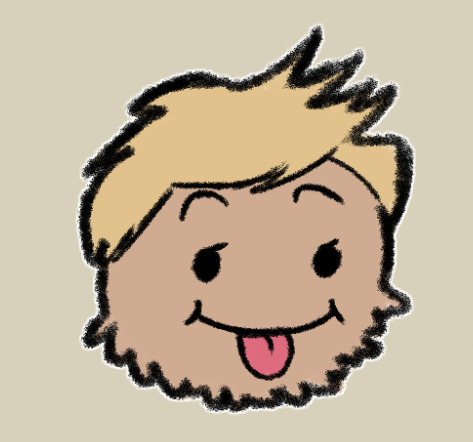
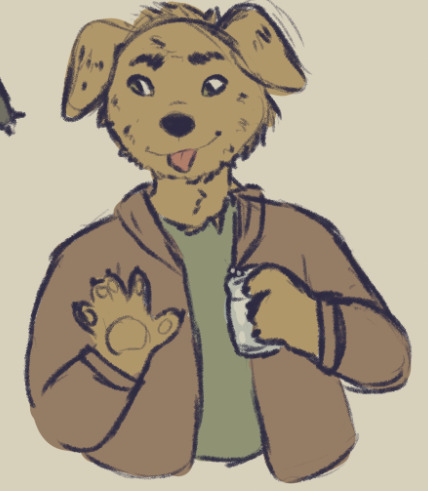
we're getting to the point i really don't have good art for them LOL. uhh seth is a werewolf, he's not the youngest kid in his family but he's the last adult one who stayed home and he spends a lot of time driving around his younger teen siblings + his niblings. despite being a big midwestern corn fed boy he has eldest daughter syndrome. he works at a gas station LMFAO. he is also. a werewolf (name is a wolf joke lol). it's fine he definitely doesn't have any repressed anger or depression issues going on. he is asher's best friend! they are basically platonic soulmates and aodhan HATES him for it GJFSOGJ.
would anyone be inchrested in an oc rundown post
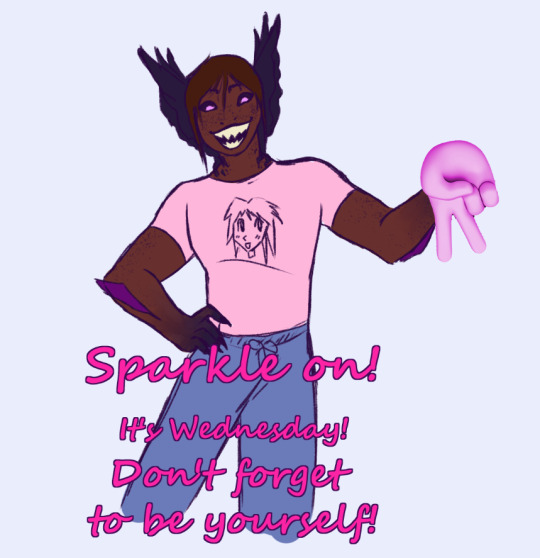
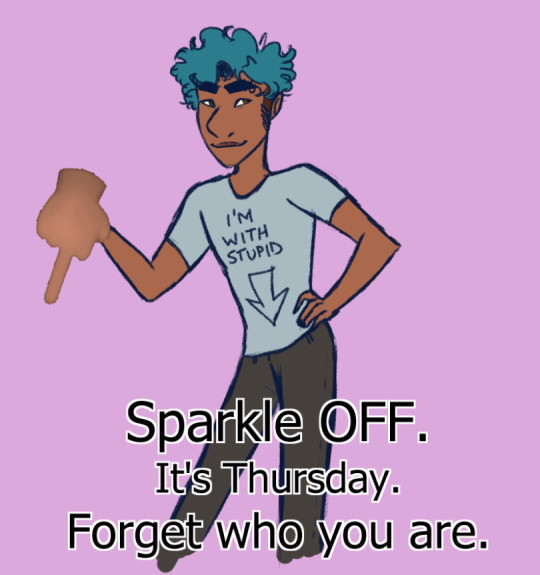
9 notes
·
View notes
Text
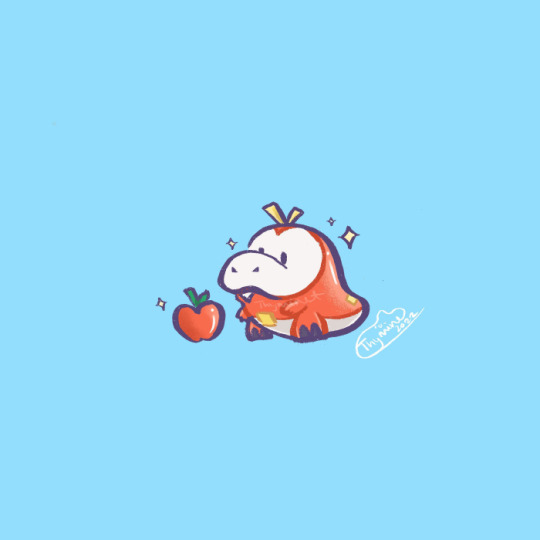
Happy Pokémon Scarlet & Violet day~
79 notes
·
View notes
Text

It's a bond to last a lifetime
Love is encoded in our dna
Ok that's enough puns for now. From one science nerd to (maybe) another, happy Valentine's day!
#valentines#happy valentines day#love#holiday#scientist#science#scientific illustration#dna#biology#ap bio#ap biology#andenine#thymine#my art#artist#art#artists on tumblr#artwork#pencil#graphite#hearts
10 notes
·
View notes
Text
Be my Cytosine
Rowaelin month day 12 - delayed love confession
Ok, today’s title is a weird one. If you have a knowledge of basic biology you will know that DNA has four nucleobases called Adenine (A), Guanine (G), Cytosine (C) and Thymine (T). You should also know that C always pairs with G and A pairs with T but in RNA A cheats on T with Uracil. This should help to understand the confession at the end. In the fic Rowan is a geneticist... ( a field your truly finds extremely fascinating).
Apologies for the biology lesson. I felt I had to give an explanation for the weirdness of the title which is, by the way, also a play on the phrase Be my valentine...
Anyway... enjoy it!
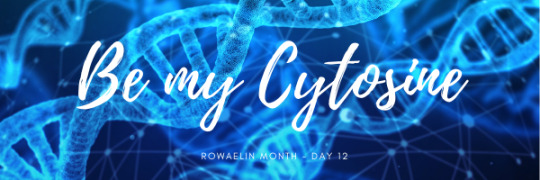
Aelin was at the pub waiting for Rowan. He had texted her to meet him at their pub. She had a tiring day at work and was more than happy to finish off the day at the pub with her best friend.
Aelin was a high school teacher and Rowan was a scientist. He worked in a lab as a geneticist.
They had friends in common, and they met through them but their beginnings had been turbulent. The man had confessed he hated her guts and she had admitted she was not his fan either. The animosity had lasted for about a year. Then something shifted and slowly their relationship settled and they became friends. Until the she broke up with Chaol, he kicked her out of the flat and Rowan had been the first one to offer her his spare bedroom. So they became flatmates and the friendship blossomed even further to the point she could now call him her best friend.
What she had never had the guts to tell him was that she had been in love with him for a while now. But she had kept it to herself. They lived together and it might complicate everything between them. So she had pined in silence. Not even her friends knew about her secret.
*
Rowan was looking forward to meet Aelin at the pub. He had big news and she was the first person he wanted to share it with.
The job offer had been the culmination of years spent on books, his PhD years spent in labs day in and day out and then his currently living in a lab. but all of the sacrifices had finally paid off. He had been offered the position as a lead scientist in Doranelle as a part of the research team at the country’s most prestigious hospital. It was the opportunity of a lifetime.
He had spent the day in a daze.
Now he was driving and he hoped she would be happy for him.
Once at the pub he parked and finally walked in. He scanned the venue and finally spotted her blonde hair. She was sitting at a table with two pints in front of her.
“I got your favourite as soon as you told me you were five minutes out. Still nice and cold.
They clinked their glasses and Aelin took a huge gulp of her beer.
“Long day at work?” He mused at the avidity with which she drank the first gulp.
“Teenagers and their drama���” she explained “and on top of that, parents who think they can tell you how to do the job that you have been doing for the past ten years.”
“Just tell them to fuck off.”
“Says the man who works all day with petri dishes and DNA. They at least don’t talk back to you.”
Rowan chuckled “DNA mutating might be its way to tell me to fuck off.”
Aelin snorted so hard at the joke, while she was taking a sip that she had inhaled a bit of the beer and was now coughing after the drink went down the wrong pipe.
Rowan patted her back and she coughed a bit more.
“Are you okay?”
Aelin nodded “sorry I just imagined a DNA strand unfolding and in cartoon style morph back into a middle finger in the microscope.”
This time was the turn of Rowan to laugh. She loved that dynamic of theirs. She had even brushed up on some of her high school biology to make jokes. Once for Samhain she had dressed up as a Punnett square. Rowan had laughed for then minutes, then went and corrected it, saying that the combinations were incorrect.
Rowan cleared his voice and the atmosphere shifted all of a sudden “I got a big news today.”
Aelin grinned “Spill you heterozygote beans, Whitethorn.”
“I got a job offer.” He admitted, taking a sip of his beer “An hospital in Doranelle has offered me a lead scientist position for their project on genetic mutations. They read all my papers on a specific disease and its onset. Now they want me to work in one of their state of the art labs.”
Aelin gasped. That was an incredible opportunity. She knew how hard he had worked to get where he was and the job offer was the reward for all the time he had sacrificed and personal life as well. He and Lyria had dated for a couple of years until she left him because he was more dedicated to her job than her.
And if a part of Aelin was elated for him, the other, the selfish one, was hurting. He would leave. He would have a brand new successful life in Doranelle. Away from her. It hurt.
“Ro, that is absolutely amazing,” she hugged him hard and tried to hide the ache in her heart.
“I will need to leave in two weeks. I can move the lease of the flat to your name, I— ”
Aelin shushed him “let’s just celebrate tonight.” He nodded and toasted to a new adventure.
*
Two weeks later
Aelin had begged Rowan to let her drive him to the airport. He had tried to convince her that he was happy to take a taxi, but Aelin had been stubborn and now she was helping him unload his luggage from the trunk of her car.
Her heart was racing. The previous night she had cried herself to sleep. The idea of him leaving her for good was killing her.
She accompanied him to check-in and forced herself to calm the tears that were now threatening to spill.
And when he started walking to the security area, the place where she knew she’d have to eventually say good bye to him, she froze.
Rowan noticed she had stopped “What’s wrong, fireheart?”
Aelin looked up at him, tears finally broke free “I love you.” She sobbed. “Rowan Whitethorn, I love you. You are the C to my G.” She let out a wet chuckle “not A since it cheats on T with U.”
Rowan laughed.
“What I am trying to say is that is you. Only you. And I know it’s the wrong time because you are going away to your dream job, but I had to tell you.” She was now sobbing and Rowan pulled her to his chest “you are the most amazing woman I ever met and I don’t deserve you.” He pulled back but kissed her on the forehead “be happy, Aelin.”
And he slowly walked away from her. Aelin watched at him disappear through the barriers. Never looking back. Aelin cried and cried. She stared at the screen watching the message switching from Boarding Now to Gate closed. She sat on a chair in the waiting are and let her desperation take over.
*
It was half an hour later when she heard a voice call her name. She hadn’t moved from her chair, she just could not leave.
It couldn’t be. He was on a plane.
She stood and turned and saw Rowan standing near the chair with his duffel bag on his shoulder.
“Rowan?” She breathed, her voice shaken by sobs “the plane.”
“I got off the plane.” He chuckled “and pissed off a lot of people since now they have to unload my luggage.”
“You got off the plane.”
He nodded again and took a step to her “I sat at my seat and all I could think was your confession. And realised that I have been an idiot.” He took her hand “I love you, Aelin. You are as well the C to my G. It took me almost to take off to realise it but better late than never.”
Aelin threw herself in his arms and he held her tight “and where else will I find a woman who uses genetics for a love declaration? That was super hot.” Aelin chuckled while inhaling the scent of pine and snow that was so typically him “what about your job?”
Rowan shrugged “my boss was quite gutted at losing me. I guess they will be happy when I phone tomorrow and tell them that I am happy to go back if they still want me.”
“But—” Rowan shushed her with a kiss.
“No buts, I have no regrets. This is the right choice.” And he kissed her.
A few minutes later a voice called him “Mr Whitethorn.” He turned and saw an airport attendant carrying his luggage.
“Thank you, and I am sorry.”
The man grunted something and walked away.
Aelin grabbed one of the bags and his hand and they walked out.
“Let’s be clear, I blame oxytocin.”
Rowan stopped and pulled her to him and then lifted Aelin in his arms, not caring about all the hundreds of people around them.
“I love you, Aelin Galathynius.”
57 notes
·
View notes
Video
youtube
DNA Drawing Step by Step | DNA Structure Pencil Drawing | How to Draw DNA Double Helix Structure
To learn DNA structure pencil drawing step by step easy method you should know how to draw DNA double helix structure and DNA double helix structure drawing. Have a look at how to draw DNA and DNA structure drawing with labels. So let's watch how to draw structure of DNA easily. DNA molecule structure drawing is the first step, I mean how to draw structure of DNA molecule and how to draw chemical structure of DNA. DNA structure model drawing is the second step here. Focus on how to draw structure of DNA in easy method for class 12, class 10 and class 11.
✅SUBSCRIBE: https://www.youtube.com/c/FarinKhanArtAcademy
Step-by-Step Tutorial:
How to Draw the DNA Structure:
The representation of DNA structure can be represented as a simple or complex drawing. In this tutorial, we will show you how to draw the DNA structure in an easy way.
Step 1: Guidelines. Draw two parallel lines to serve as the basis for the two DNA strands. They should not be perfectly straight, as DNA has a coiled structure. A slight curve or spiral is ideal.
Step 2: Base Pairs. Draw small lines perpendicular to the two strands. These lines represent the base pairs that connect the two DNA strands. The base pairs should be evenly spaced along the two strands.
Step 3: Twisting.g Begin to turn the two parallel lines and the base pairs into a spiral. You can tilt the small lines (base pairs) slightly to simulate the helical shape of DNA.
Step 4: Three Dimensions To give the drawing a three-dimensional effect, you can draw the parallel lines and base pairs so that they slightly overlap or hide behind each other.
Step 5: Sugar-Phosphate Backbone The two strands of DNA are often referred to as the sugar-phosphate backbone. To show this, you can draw small circles or squares along the two parallel lines. This shows the individual sugar and phosphate molecules.
Step 6: Bases The base pairs are represented by the letters A, T, C, and G. If you want, you can place these letters near or on the small lines between the strands to represent the base pairs adenine (A), thymine (T), cytosine (C), and guanine (G).
Step 7: Shading Add shading to give the drawing more depth and realism. Shading can be applied along the sugar-phosphate backbone and base pairs.
Step 8: Fine-tuning. Go over your drawing and add any details or adjustments you feel are necessary. Make sure the proportions are correct and the helix structure is clear. You've now successfully drawn a DNA structure! This tutorial provides a simple way to represent the complex features of DNA in an easy-to-understand format. You can make the drawing as detailed as you like by adding more molecules, bases, or even additional helices. Happy drawing!
#scienceart #sscbiology #biologypractical #dna #stepbystepdrawing #drawing #drawingtutorial #art
#youtube#dna drawing step by step#dna structure pencil drawing#how to draw dna double helix structure#dna structure drawing easy
1 note
·
View note
Text


46. “Were you just masturbating?”
“U-uh..no, i was just..”
“Want some help?”
72. “You don’t need to cover up the bruises/hickeys.”
notes; fingering, marking, some science jargon, ive always been an arts student so😗, also idk if yall can tell but i love writing playful fucking/sex for jun bc i think he’s just??? So playful and cute??? Which i LOVE kdjfhsdk 😭😭, this is only slightly long but for space sake the rest is under the cut! Thank you for requesting! Enjoy! 💕

Jun as your tutor is a toss up.
Some days he actually helps you understand the material.
And most days he decides eating you out for 45 minutes is enough ‘learning material’.
Last time, he made you cockwarm him while he ‘helped’ you study for your molecular biology exam; the same exam which you had failed miserably.
This time, however, you decide to beat Jun to it; fingers traveling down your own torso and straight into your panties. You figure if you got off before he showed up, then there’s no way he’d be distracted during your tutoring session if you weren’t in the mood to fool around either.
A stuttered moan spills from your lips, eyes fluttering shut when your fingertips graze against your already wet folds. Your legs part even farther as your imagination wanders; thoughts of Jun’s hands on your skin and his saccharine moans next to your ear as he fucks you.
“Hey! Whoa---shit!”
In the blink of an eye, your legs snap shut and you pull your fingers out of your panties, sitting up in bed with a blush on your face as you stare back at Jun. “What the fuck, Jun!? How did--How did you even get into my apartment!?” He immediately ignores your question, stepping into your room and locking the door behind him.
“Were you just masturbating?”
“U-uh… No, I was just…”
“Want some help?” He doesn’t wait for a reply, instead grabbing a book from his things before he settles on the bed in front of you. “Spread your legs.”
“What? W-wait, you’re supposed to help me study! I failed my exam because of you, y’know!” You pout at Jun, arms crossed as he rolls his eyes.
“Exactly, which is why I showed up early. So I could help you actually study. I didn’t think you were gonna be in here getting off in the meantime.” He pauses, flipping the book open before tossing it to your side. “Your roommate let me in by the way, and I heard your professor is letting you retake the exam.”
You nod, biting the inside of your cheek. “I basically cried in front of her. She felt bad so she said I could retake it on Friday. But I really need to study, Jun…”
He nods in reply, eyes glancing towards the textbook. “And we will! But since I’m here early…” Jun places his hands on your knees, prying your legs apart. You can feel the arousal pooling in your body when your eyes meet his; legs spreading to accommodate him between them. “Let’s see how much info you actually retained from last time.”
You can only stare at the ceiling, mind completely blank when Jun finally sinks his fingers into your pussy after torturous minutes of teasing. “O-oh fuh--fuck--”
“I asked you a question.” He comments in mock annoyance, fingers unmoving as you clench around his digits. “W--what was the question again?” You ask breathily, leaning up on your elbows as Jun stares down at you.
“What are the purine bases in DNA?” You can only let out a choked sob, squirming when Jun doesn’t make an effort to move. “I--fuck, I don’t remember… Um, c-cytosine a-and thymine?”
“Nope, those are pyrimidines. C’mon, this is an easy question.” Jun leans down, lips pressed against the column of your neck. He leaves soft kisses, lips ghosting against the shell of your ear. “Don’t you wanna cum?” He whispers; his sweet voice sending thrums of arousal down your spine.
“A-ah, u--um, adenine and--and g-guanine?”
Jun smiles against your skin before he sucks a lovebite onto it, fingers inside your pussy finally moving as he starts thrusting them into you. “Mmh, J-Jun…” Whining, you tangle your fingers in his shirt, eyes fluttering shut at the combination of his lips and fingers making you feel good.
He leaves a few more lovebites on the column of your neck before he start to pull away. “No, no, no, don’t s-stop, please!” You beg; your grip on his shirt only tightening. He licks his lips, eyeing the blossoming marks on your neck. “Answer one more question and then I’ll let you cum. But then we’re really studying afterwards, okay? Can’t have you failing again.” You nod frantically, a sigh of relief on your lips when Jun doesn’t stop thrusting his fingers. He scissors them inside of you; curling them to graze against your g-spot.
“Hm… Give me… the three stages of DNA isolation. But in order.”
fuck.
Jun slows his pace when you take too long to answer, a small ‘tsk’ falling from his lips. “Guess you don’t wanna cum?” You can only whine; squirming when you feel him slowly easing his fingers out of you.
“No--no I wanna c-cum! Please…” He pauses his movements, waiting on you to answer.
“It’s---It’s… l-lysis, precipitation, and, ah, and p-purification? Right?”
“See, I knew you remembered some stuff.”
Jun slides his fingers in knuckle deep, smirking as he places his thumb on your clit. He doesn’t say another word as he leans in again, lips at the junction of your neck before he sucks on the skin; soft nibbles making you jolt.
You try to keep quiet knowing the two of you aren’t alone, but Jun’s pace quickens, fingers curling inside of your tight walls when he feels you close to cumming. “Jun--Jun---I’m--I--”
“S’okay, you can cum.” He mumbles against your skin, leaving another blossoming mark on your skin just as you orgasm crests; chest arching up into his as you bite your lip to keep in your noises. Your walls throb around his fingers, a soft groan of his own spilling from your lips when he imagines it’s his cock inside of you instead.
Jun keeps pumping his fingers, thumb on your clit still rubbing circles until he feels you starting to come down from your high. You whimper his name, quietly begging him to stop when the overstimulation starts to bite.
He slowly eases his fingers out, bringing them to his lips as he licks them clean.
“My neck is all… wet…” You mutter, fingertips ghosting across the tender lovebites Jun’s left on your neck. He grins at you from around his fingers, popping the digits out before he leans in again.
“I know you like it when I’m messy. And anyway, you don’t need to cover up the hickeys, y’know. I left them there for a reason.”
You can only quirk a brow at him, waiting for him to continue. “What? D’you think I was just fuckin’ you for fun? I know I’m not exactly the most straightforward guy and I think we might’ve fucked it up a bit but do you wanna go on a date with me after your retake?”
An awkward laugh spills from your lips; cheeks blooming into a pink when you realize he’s being serious.
“I--yeah, um, sure? I’d like that…” You trail off, suddenly shy.
“Okay, well, let’s get to studying then! If you ace your retake, I’ll fuck you however you like too. Deal?”
You grin up at the male, already having a few ideas lined up. “Sure, it’s a deal.”

#jun smut#Junhui smut#seventeen smut#svt smut#jun scenarios#jun imagines#Junhui imagines#Junhui scenarios#seventeen scenarios#seventeen imagines#svt imagines#svt scenarios#jun#junhui
355 notes
·
View notes
Text
TAFAKKUR: Part 207
Functional Art in the Nucleus: DNA
Volumes of books and hundreds of articles have been published about the structure and functions of DNA, since the day two renowned scientists from Cold Spring Harbor laboratories, who would later win the Nobel Prize, described the double helix structure of it. Perhaps one common element that shines through all the publications is their emphasis on the numerous specific functions of DNA, if not the fascinating harmony of these specific functions in a living organism. In this article, we will take a look at a few small droplets from the vast ocean of information about the multi-layered functions of DNA that are orchestrated in an awe-inspiring manner.
The cell is the structural, functional, and biological unit of all organisms. All information needed for numerous processes in a cell, including repair and division, is contained in DNA (Deoxyribonucleic acid). DNA is a huge single molecule with intriguing features. How can a single molecule have such a dominant role in preserving information essential for the continuation of life? What are the mechanisms and levels of organization during its function? What does DNA mean for a single cell or for a human being? It’s impossible to answer these great questions in a single article; however, understanding the ways DNA exerts its role, DNA’s impact on multiple levels ranging from a single cell to an organism, and coordination between various levels, can potentially open up new frontiers in our mind and in our perception of life.
“Double helix” architecture of DNA DNA has an elegant structure that forms the basis for all of its functions. DNA is a repeating structure of nucleotides. Each nucleotide is formed of a phosphate group, 5-carbon sugar (deoxyribose) and a nitrogen-containing base attached to the sugar from outside to inside (See Figure 1a for a schematic view of DNA). There are four types of nucleotides in DNA, differing only in bases. We can consider bases as the identity of nucleotides. These four nucleotides are shown with letters A (adenine), T (thymine), G (guanine) and C (cytosine). Thousands of nucleotides bound with sugar-phosphate covalent bonds come together to form long strings. The sugar-phosphate backbone can be imagined as the steelwork of a skyscraper. The nice thing about nucleotides is their specific match to each other in double helix. A forms a base pair with only T, and G forms a base pair with only C. These pairs are bound to each other with hydrogen bonds. This feature is the key that makes DNA a double ladder. Two strings of nucleotides form a double helix by selective interactions of As with Ts, and Gs with Cs (See Figure 1b for 3-D structure of DNA). In DNA structure, hydrophobic bases tend to stay inside of double helix and hydrophilic sugar-phosphates stay outside interacting with water in nucleus. This feature helps DNA to form a double ladder. The length of the sugar-phosphate backbone is more than the bases. To compensate for the length difference, the sugar-phosphate backbone wraps around the bases inside, as a road wraps around a mountain to climb to the top. This simple difference is the main reason for DNA to form a helix.
The double-stranded nature of DNA with specific base pairing is one of its key features as genetic material. DNA is replicated using one strand as a template. Replication machinery reads one strand of DNA and builds the second strand by putting As against Ts and Gs against Cs. If a mutation occurs in one strand, it can be repaired using the second strand. This system is like photocopying DNA from itself instead of building it from scratch every time. That is why specific base pairing of nucleotides in the double helix makes it possible to replicate DNA through generations, protecting its integrity and information content. The code of DNA, an alphabet with four letters DNA contains the information to produce nano-sized cellular machineries called proteins. We mentioned that there are four types of nucleotides. Nucleotides are like letters in DNA, three of them are code for one amino acid of protein. We can make it more understandable by giving an example: “ATG-GCC-CTG-TGG-ATG” as a nucleotide sequence of DNA corresponds to the first five amino acids of a protein called insulin (a hormone regulating blood glucose level that is important in diabetes) and amino acid sequence is methionine-alanine-leucine-tryptophan-methionine. The code is so sensitive that even a single mistake in the sequence of DNA can cause serious diseases in humans such as sickle-cell disease or cystic fibrosis. With all these nucleotides, DNA can be thought of as a book containing amino acid sequence information for thousands of proteins (about 30,000 in humans). The amount of information contained in DNA is incredible: a typical human cell contains 2 meters of DNA that is tightly packed by proteins in the nucleus. If we tried to write the information from DNA into books, the book would contain over one billion words and 1,500,000 pages. DNA-protein interdependency and the cell as a micro-factory DNA can be thought of as an instruction manual that stores information for proteins and RNAs. Proteins, as molecular machines, perform particular tasks such as energy production and synthesis of DNA and RNA (See Figure 2 for the structure of proteins). Certain proteins read the information on DNA and make a transient copy of certain regions of DNA. These copies are called messenger-RNAs (mRNAs) and mRNAs are transported from nucleus to cytoplasm (See Figure 3 for representation of mRNA production from DNA by proteins). In cytoplasm, the information on mRNAs is read by protein complexes called ribosome. Ribosomes produce new proteins processing the data from mRNAs.
This information flow from DNA to proteins is called central dogma in molecular biology (Figure 4). The data that is encoded in DNA can be read, translated, and put into the form of product only by proteins. We can conclude that for a protein to be produced, DNA is essential; for DNA regions to be read into proteins, proteins are essential. So, there is interdependency between proteins and DNA. Proteins without DNA have no future and no ability to regenerate and DNA without proteins is just like an instruction and manufacture manual of a computer without the user and computer itself. We can imagine the cell as a sophisticated factory, and proteins as the machines of the factory. DNA includes the instructions for the factory to be rebuilt and for itself to be rewritten for every new factory. It has instructions on how to build every machine in the factory. It has also codes for when and how much of these machines should be produced (we will discuss more about these codes on DNA in the next section). On the other hand, the timing and control of all these productions also depend on machines in the factory. Some of these machineries read and decode the instruction manual, some of them produce new machines by reading the decoded copies of the instruction manual, some of them act as sensors for the signals, some of them transmit signals to other machines, some of them produce signals by measuring the levels of materials in the factory, some of them function in communication with other factories, and so on. As we can see, DNA and proteins are meaningful for life only when they are together in the excellent cell context. This is a perfect example of the principle that the whole is bigger than the sum of its parts, because each element of the cell system has limited potential, until it comes together with the others to blossom into life.
The famous term “Gene” We can think of genes as functional units of DNA. A gene has the information content for at least one protein. Humans have about 20,500 genes that are read by protein machineries to produce proteins. Special proteins read the information on genes and make a transient copy of these certain regions of DNA. The process of making a copy of a gene as an mRNA is called transcription.
Genes don’t only store information; they have an intrinsic architecture of design to coordinate transcription utilizing three main components: promoter, coding region, and terminator. The promoter is the gene region that signals for the start of transcription. Protein machineries bind to the promoter and activate transcription. The coding region has the information for the amino acid sequence of the protein. The terminator region gives the stop signal for transcription. There are different functional regions on DNA located between separate genes such as enhancer regions that are platforms for binding regulatory proteins to tune the transcription.
The coding region of genes has multiple reading blocks for amino acid sequences and these reading blocks are called as exons. For some genes, different combinations of exons can be put together to give rise to different proteins. This mechanism allows one gene to be able to produce multiple proteins, increasing the efficiency of genetic material. A similar mechanism is used to produce antibodies (proteins recognizing foreign antigens) by the immune system. Different regional genes come together by a mechanism of DNA rearrangement (V(D)J recombination) and their differential combinations form many different antibodies. For example, a part of the antibody that is called a heavy chain is produced by a DNA region containing 65 variable (V) genes plus 27 diversity (D) genes and 6 joining (J) genes (5, 6). This produces a combination of 65 V genes x 27 D genes x 6 J genes = 10,530 heavy chains. There is a similar mechanism of rearrangement for light chain and variable region of antibodies, which result in millions of different antibodies for host antigens. A single example in the immune system shows us that DNA not only has a decent design for the coding system, but it also has ingenious and creative mechanisms to maximize its potential.
Gene expression is orchestrated during development and formation of organs The human body which consists of more than 1013 (ten trillion) cells is generated from a single cell called the zygote (see Figure 5). This tells us that, in a single cell, all the information and instructions to build and coordinate the systems of human body is encoded. Different tissues and organs including muscles, nerve cells, connective tissue, and eyes are fruits of one single cell. They all contain the same genetic information. Then what makes them different?
Promoters, enhancers, and repressors located in and nearby genes are important in spatial and temporal control of gene expression in different cell types of the body. Each cell type in our organs expresses a different subset of genes; this is what gives a cell its identity. For example, in muscles, myosin is expressed and in the eye’s retina, rhodopsin is expressed. Myosin functions in contraction and rhodopsin functions in vision. What determines the expression of rhodopsin in the eye but not in a muscle? The determination process occurs during development by programmed interactions of specific proteins called transcription factors, and restricted regions of DNA including promoters and enhancers. During development, certain regulatory proteins in a specific cell type, bind to DNA regions of only some genes (for example, in future retinal cells of the eye, rhodopsin gene would be activated but not myosin) and this predetermination orchestrates differential expression of genes to give rise to hundreds of different types of cells.
Different layers of complexity and organization related to DNA
There are different layers of function for DNA—each subtitle of this article tries to focus on a certain layer of function. DNA as a molecule has a double helix structure and is replicated through generations to preserve genetic information. It stores genetic information and has a four-letter alphabet for the expression of proteins. In the second layer, DNA has an informational unit called gene and thousands of genes are encoded in DNA to contain information for proteins. Each gene is controlled individually by making use of promoters and enhancers. In the third layer, all processes in the cell micro-factory as an entity are performed through interactions of DNA and proteins with each other and among themselves. Proteins read DNA code and work as cellular nano-machineries. In another layer, temporal and spatial expression of genes on DNA are orchestrated and different subsets of genes give rise to different cell types and organs. Organs communicate with each other to function properly and keep the balance and homeostasis of the body. The information stored in DNA not only coordinates highly sophisticated processes of a single cell, it simultaneously projects the whole body system of a human being, which is billions times bigger than a single cell.
DNA functions in all these different layers and keeps a great harmony in coordination between various layers of function. After grasping this complexity, organization and communication from a single molecule, to proteins, to a single cell, to tissues and organs, and to a human being by utilization of DNA, should not we ask ourselves, “can these elements come into existence by random forces and collisions?
#allah#god#prophet#Muhammad#quran#ayah#islam#muslim#muslimah#hijab#help#revert#convert#religion#reminder#hadith#sunnah#dua#salah#pray#prayer#welcome to islam#how to convert to islam#new convert#new revert#new muslim#revert help#convert help#islam help#muslim help
1 note
·
View note
Photo






Thymine’s [SELECT START: Harmony] haunts us with Game Boy ghosts, slimes, and devil girls ⊟
LA micro-gallery Capsule Corner is hosting another collection by Thymine with 30 custom cartridges (new designs plus reprints from last year’s show) and two painted Game Boys featuring her original artwork. A lot of her artwork for this round are ghosts and slimes, two of my favorite things!
From Thymine’s artist statement:
“I think my art is overall usually seen as cute, but it touches upon darker, bittersweet themes sometimes. Some of the carts are bright and silly, some sad or scary, and some that are inbetween. With this show I wanted to have fun with the carts and this idea. I also wanted to have it as a reminder that with the bad comes the good (and vice versa), & that the darkness and light need a balance of eachother and work in harmony.“
Most of them are sold already, but you can still buy a handful of Thymine’s framed Game Boy carts for $50 apiece -- otherwise you can see them all online at Capsule Corner’s site or in person at The Hive Gallery and Studios. The [SELECT START: Harmony] exhibit will run there until July 10.
JOIN CLUB TINY AND OUR DISCORD Support Tiny Cartridge!
161 notes
·
View notes
Photo
Somewhere,a dermatologist is screaming. Don't do this. Ever. This is as bad as going to a tanning studio. UV lamps induce thymine dimers in your DNA, which can cause cancer if the thymine dimers are not repaired via DNA-repair machinery in your cells. This is not art; it's mutilation.

Thomas Mailaender - Photography on skin using negatives and a uv lamp.
#skin cancer#thymine dimer#dermatology#carcinogens#uv light#sun burn#melanoma#thomas mallaender#ultraviolet light
67K notes
·
View notes
